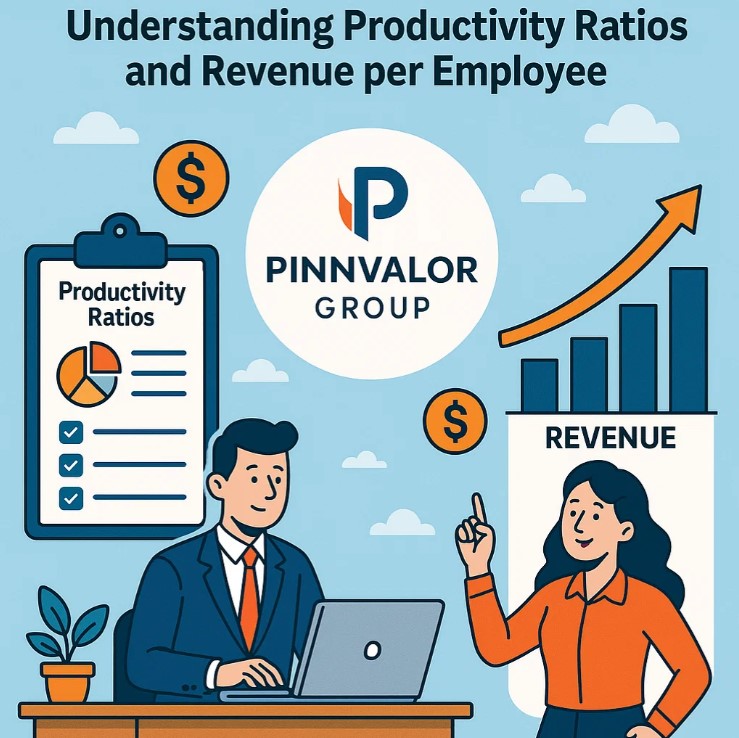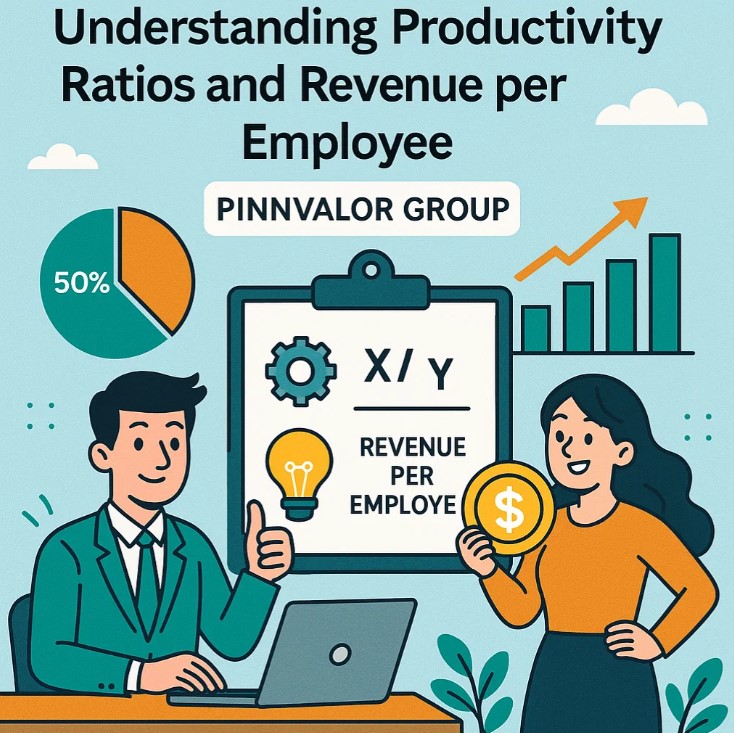
Maximizing Efficiency: Understanding Productivity Ratios and Revenue per Employee
In today’s competitive business environment, efficiency isn’t just a buzzword—it’s a necessity. Companies that understand and optimize productivity metrics gain a strategic advantage, allowing them to do more with less while maximizing profitability. Among these metrics, Revenue per Employee offers deep insights into a company’s operational performance.
Are you measuring what really matters in workforce efficiency?
Revenue per employee reveals the real strength of your workforce. Invest in training, technology, and processes to unlock true potential.
What Are Productivity Ratios?
Productivity ratios are financial and operational metrics that measure how effectively a company utilizes its resources—especially its workforce—to generate outputs like revenue or profit. They help businesses identify strengths, inefficiencies, and opportunities for improvement.
Some commonly used productivity ratios include:
- Revenue per Employee – Measures the average revenue generated by each employee.
- Profit per Employee – Shows how much net profit is attributable to each staff member.
- Operating Expense per Employee – Helps gauge cost efficiency relative to the workforce.
- Asset Turnover Ratio – Indicates how well the company uses its assets to generate revenue.
Revenue per Employee: The Key Productivity Metric
Among productivity ratios, Revenue per Employee (RPE) is perhaps the most widely recognized. It’s calculated as:
Revenue per Employee = Total Revenue ÷ Number of Employees
For example, if a company generates $10 million in revenue with 100 employees, its RPE is $100,000. This metric offers a snapshot of workforce efficiency, highlighting how effectively the team converts labor into business results.
Why Revenue per Employee Matters
- Operational Efficiency: A higher RPE suggests that employees are generating more revenue, indicating efficient processes, strong skills, or the effective use of technology.
- Benchmarking Performance: Comparing RPE across industry peers helps businesses understand their competitive standing. For instance, tech companies often report higher RPE than manufacturing firms due to differences in scalability and automation.
- Informed Decision-Making: Leaders can use RPE to guide hiring, investment, and process improvement decisions. For example, a declining RPE might signal the need for workforce training or process optimization.

Limitations of Revenue per Employee
- It ignores qualitative contributions like customer satisfaction or innovation.
- It can be skewed in capital-intensive industries where revenue is not directly tied to workforce size.
- Comparing RPE across different sectors without context can be misleading.
How to Improve Revenue per Employee
- Invest in Employee Training: Skilled employees are more productive and can handle complex tasks efficiently.
- Adopt Technology and Automation: Tools that streamline workflows reduce manual effort and increase output per employee.
- Optimize Processes: Regularly reviewing and improving business processes ensures teams are focused on high-impact activities.
- Focus on High-Value Activities: Encourage employees to prioritize tasks that directly contribute to revenue growth.
- Strategic Hiring: Adding the right talent in the right roles can improve RPE without unnecessarily expanding headcount.
Other Useful Productivity Ratios
While Revenue per Employee is critical, consider monitoring additional ratios for a complete productivity picture:
- Profit per Employee: Evaluates profitability alongside revenue.
- Operating Expense per Employee: Helps control costs without sacrificing output.
- Revenue per Unit of Asset: Connects operational efficiency with asset utilization.
By analyzing multiple ratios together, companies gain a holistic view of efficiency and profitability.
Conclusion
Productivity ratios, especially Revenue per Employee, are powerful tools for understanding workforce efficiency and guiding strategic decisions. By tracking these metrics and taking action to optimize performance, businesses can not only maximize output but also create a sustainable path for growth.
Investing in your employees, leveraging technology, and refining processes are practical ways to boost productivity ratios—and ultimately, strengthen your company’s competitive edge.
